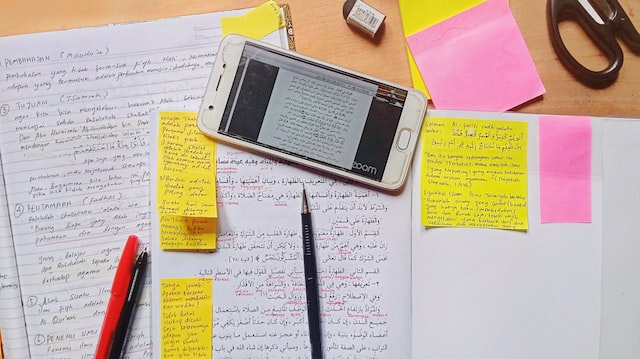Despite Urgency, New National Tutoring Effort Could Take 6 Months To Ramp Up
Despite Urgency, New National Tutoring Effort Could Take 6 Months to Ramp Up
Receive stories like these directly in your email inbox. Sign up for Newsletter.
As we enter the third summer of the pandemic, the Biden administration is making a new push to recruit 250,000 tutors and mentors to support students in recovering from academic and social-emotional setbacks. However, experts and organizers believe that the impact of these efforts may not be seen by families and schools until 2023.
Robert Balfanz, an education professor leading the new National Partnership for Student Success at Johns Hopkins University, expressed concerns about the slow mobilization of tutors. He acknowledged that there have been missed opportunities in addressing the needs of students.
Nevertheless, Balfanz highlighted the importance of the effort’s connection to the White House and AmeriCorps. These alliances can help overcome staffing challenges that have hindered the expansion of tutoring programs by schools and nonprofit organizations since the start of the pandemic.
Balfanz emphasized the need for collaboration with colleges, major employers like Starbucks and Target, and established nonprofit organizations that serve youth. He believes that these partnerships can transform the Partnership into a nationwide tutoring corps, an idea that experts have been suggesting for several years. AmeriCorps will also allocate $20 million towards recruiting and training tutors.
In March, President Joe Biden urged Americans to sign up as volunteers and mentors to support students struggling with the consequences of school closures. The new initiative comes in response to recent research from Harvard University, which revealed that students in districts that were slower to resume in-person learning experienced greater declines in learning outcomes.
During a virtual announcement, Education Secretary Miguel Cardona and White House Domestic Policy Adviser Susan Rice emphasized the urgency of using American Rescue Plan funds for academic recovery through high-quality tutoring, afterschool programs, and summer programs. They stressed that if districts are not utilizing these funds appropriately, they need to start doing so.
Marguerite Roza, director of the Edunomics Lab at Georgetown University, argued that districts should prioritize students’ academic progress when allocating funds. She noted that the 20% requirement for learning loss may be insufficient for many districts.
Tennessee is one state that is directing relief funds towards tutoring. The ALL Corps (Accelerating Literacy and Learning) began during the 2020-21 school year and now involves over 80 districts, which provide matching funds. Education Commissioner Penny Schwinn believes that the state program has yielded positive results. Recent test scores indicate that elementary students’ performance in English language arts has returned to pre-pandemic levels, with greater gains observed than in the past five years. Gaps in math due to learning loss are also narrowing.
Schwinn highlighted the effectiveness of in-school tutoring by paid educators, as opposed to before or after-school tutoring by volunteers. Some districts have hired surplus educators, retired teachers, and those in teacher preparation programs as tutors. Schwinn cautioned against the misconception that anyone can be a tutor without proper qualifications.
However, Schwinn acknowledged that establishing a meaningful national tutoring program for the fall may not be entirely realistic due to logistical challenges.
Roza noted that districts have already approved their budgets for the 2022-23 school year, and making changes would require approval from school boards.
In addition to the recruitment efforts, the Education Department launched a map showcasing how other states are utilizing funds. The National Center for Education Statistics, in collaboration with organizations such as Edunomics and Future-Ed at Georgetown, will monitor the extent to which schools are investing the money in tutoring and other academic enrichment programs.
In the American Rescue Plan, Congress designated over $1 billion for both summer and afterschool programs, with the aim of helping students catch up and reintegrate into school. The Department of Education has encouraged districts to utilize the relief funds to collaborate with community-based organizations in order to achieve this goal.
As summer programs are already underway, Secretary of Education Cardona emphasized the importance of finding a balance between engaging activities that interest students and ensuring that tutoring efforts align closely with the school curriculum.
In light of the pandemic’s impact on learning, the administration has been urging districts since 2020 to use relief funds to address learning losses during the summer. A recent report from Education Reform Now sheds light on how states have implemented these efforts. The report reveals that 15 states require districts to partner with external organizations to support students during the summer. However, only 10 states have specific requirements regarding the duration and amount of academic instruction provided in such programs.
Arkansas, Connecticut, Louisiana, Mississippi, and Washington, D.C. are among the states that have mandated a staff-to-student ratio of 1:15 for summer programs, which research supports. The report also highlights concerns among state officials that imposing additional dosage and staffing requirements may discourage programs from applying for grant funds, considering the challenges of staff vacancies, turnover, and stress.
By establishing the Partnership at Johns Hopkins, led by researcher Balfanz, who specializes in dropout prevention and improving school climate, there is an increased emphasis on the use of proven strategies.
High-intensity tutoring is emphasized as essential, rather than simply offering assistance with homework sporadically. Regular and meaningful connections with mentors throughout the week are crucial for providing support when students need it most. This kind of support can contribute significantly to supporting students and turning their educational experiences around.
Jodi Grant, the executive director of the Afterschool Alliance, one of the organizations involved in the Partnership, highlights AmeriCorps as a valuable resource to address staffing challenges in afterschool programs.
Michael Smith, the CEO of AmeriCorps, holds the same expectations for school districts. He believes that this partnership will lead to an increase in the number of educators, drawing examples from successful programs such as City Year, Teach for America, and the College Advising Corps. He explains that young people working in schools and alongside children often develop a passion for education, leading to a longer-term commitment to the field.
To receive stories like this directly in your inbox, sign up for Newsletter.




0